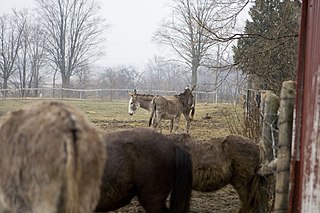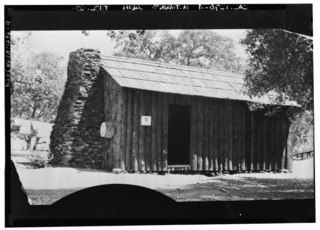
This is a story about jumping frogs, a mining camp, and an unknown American writer later known as Mark Twain. During the winter of 1864-1865 Twain accepted an invitation from the Gillis brothers to stay with them at their cabin at the top of Jackass Hill in Tuttletown, a mining town in Calaveras County. Jackass Hill, by the way, was named for the pack train jackasses that carried cargo to and from the mines and rested on the hill at night.

Beyond listening to the jackasses sing, California mining towns featured limited entertainment options, primarily drinking and gambling on just about anything. On one occasion, Twain and his friend Steve Gillis went to nearby Angel Camp, a town located between Yosemite and Lake Tahoe. While in town, the men visited the bar at Angels Hotel, where Twain overheard a story about frogs. Shortly thereafter, Twain published The Celebrated Jumping Frog of Calaveras County.
The Story

The story is about a man named Jim who loved to gamble. One day, he caught a frog, named it Daniel Webster, and taught it to jump. A stranger came into town and stopped at the saloon. Jim put Daniel in a box, went to the saloon, and after engaging the stranger in conversation, showed him Daniel and bet $40 that Daniel could out-jump any other frog in the county. When the stranger pointed out that he didn’t have a frog he could compare to Daniel, Jim left the saloon to catch one. While Jim was gone, the stranger poured lead shot down down Daniel Webster’s froggy throat. When Jim came back, the two men set their frogs at the starting point. The stranger’s frog immediately leapt into the air, but Daniel didn’t move. Jim couldn’t believe it. The stranger collected his $40 and left. Meanwhile, Jim examined Daniel and discovered he had been tricked. The story was Mark Twain’s first big success.
The Competition

In 1928 Angels Camp celebrated its first paved streets with an international frog jumping contest. Since then, the annual event usually occurs the third weekend in May.* Protective rules limit the number of jumps a frog can take during a day. As an endangered species, the California red-legged frog is not allowed in the competition. And no artificial substances can be given to the frog.
For the contest, the frog is placed on an 8-inch lily pad and encouraged to jump as far as possible. Once the frog is on the lily pad, its handler can’t touch it. Each frog has three jumps in a row, and the distance is combined for the final score. About 3,000 frogs compete during the first three days, and the top 50 contestants go on to the finals.

Frog leaps off lily pad 
Frog jockey encourages frog
Participants in the Longest Jumping Frog Contest can win $750. If the frog breaks the 1988 record of 21 feet 5.75 inches set by Rosie the Ribeter, the owner wins $5000. Winners also receive a brass plaque in the downtown Angels Camp Frog Hall of Fame and a trophy.

How far can a frog jump?
Of course, some people come for the fun and decide they would like to complete. They rent frogs provided by the fair. These frogs, on average, jump three feet. However, frogs with jockeys jump, on average, five feet. Frog jockeys catch their own frogs and take care of them for a short time before the competition.
Researchers from Brown University took advantage of the Frog Jumping Contest to rate the maximum jumping performance of bull frogs. Over four days, the research team videoed 3124 bull frog jumps. They discovered that the jockey frogs consistently jumped further than the rental frogs, but why?
Data collection demonstrated that frog jockeys kept their frogs at a regulated temperature of -20 degrees Fahrenheit, while rental frogs merely stayed in a shaded area. This meant meant the body temperature of rental frogs was higher. Another difference was one of technique. A frog jockeys rubs the frog’s legs, before dropping it on the lily pad from a short height. Finally, frog jockeys lunge after the frog which may frighten the frog into a longer jump.
If all this information about frog jumps make you wonder how the creatures make their famous leaps happen, you might enjoy this brief video of how a frog jumps.
*The International Frog Jumping Contest has only been cancelled twice: in 1933 during the Great Depression, and last year, due to COVID-19.
🐸 🐸 🐸
The Celebrated Jumping Frog of Calaveras County
Illustrations
“Couple of Jackasses” by Imnop88a.
Mark Twain Cabin, Sonora, Tuolumne County CA.
Mark Twain 1867.
Angels Camp Mercantile.
Three pictures of Frog Jumping Contest at the Calaveras County Fair and Jumping Frog Jubilee 2016 at the Angels Camp Fairgrounds. By Frank Schlenbur.
Calaveras County Fair & Jumping Frog Jubilee.
Nicola Stead. “Motivating Your Frogs.” Journal of Experimental Biology. Vol. 216. Issue 21. Nov 2013.

Sandra Wagner-Wright holds the doctoral degree in history and taught women’s and global history at the University of Hawai`i. Sandra travels for her research, most recently to Salem, Massachusetts, the setting of her new Salem Stories series. She also enjoys traveling for new experiences. Recent trips include Antarctica and a river cruise on the Rhine from Amsterdam to Basel.
Sandra particularly likes writing about strong women who make a difference. She lives in Hilo, Hawai`i with her family and writes a blog relating to history, travel, and the idiosyncrasies of life.

